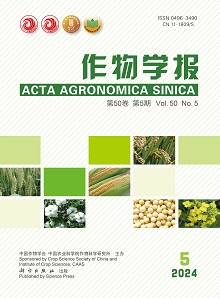Traditional tillage crop production pattern often leads to the waste of light resources and low benefit of water production. The response of light use efficiency, irrigation water productivity, and economic benefits of spring wheat to different straw retention patterns, which providing the theoretical and practical basis for production technologies for farmland resources use efficiency. A field experiment was conducted with various straw retention operations in Wuwei Oasis agricultural base of a typical oasis irrigation region in Gansu province during 2014-2016. Wheat straw retention operations included four treatments [no tillage with 25-30 cm long straw mulching (NTSM), no tillage with 25-30 cm high straw standing (NTSS), conventional tillage with 25-30 cm long straw incorporation (CTS), and conventional tillage with no straw retention (CT, the control)]. The objective of this study is to provide the basis for screening the suitable straw returning method for spring wheat production in this region. The results indicated that, compared with CT, straw retention (NTSM, NTSS, and CTS) improved the mean leaf area index (MLAI) by 14.6%-17.2%, 10.4-11.9%, 7.3%-9.4%, and improved total leaf area duration (LAI-D) by 14.6%-17.6%, 9.2%-12.3%, 8.3%-9.8%, respectively. Compared with NTSS, NTSM improved MLAI and LAI-D by 6.6%-7.1% and 5.9%-7.2%, respectively, which facilitating the expansion of photosynthetic sources in spring wheat. Compared with CT, NTSM and NTSS reduced MLAI and LAI-D by 6.1%-7.6%, 4.6%-9.8%, 6.0%-7.6%, and 8.1%-10.4% before booting stage of spring wheat, respectively. On the contrary, NTSM and NTSS improved MLAI after booting stage of spring wheat by 38.9%-45.1% and 30.7%-32.6%, respectively, and LAI-D from filling stage to full-riping stage of spring wheat was improved by 37.0%-47.5% and 28.6%-33.9%, respectively, compared with CT. NTSM effectively regulated the photosynthetic source dynamics during the growth period of spring wheat and facilitated post-flowering grain filling. Compared with CT, NTSM, NTSS, and CTS increased grain yield of spring wheat by 18.6%-27.3%, 16.6%-24.9%, and 10.2%-18.7%, respectively, increased light use efficiency by 7.8%-12.2%, 6.5%-11.2%, and 6.2%-8.4%, respectively, increased water use efficiency per cubic meter irrigation water by 18.6%-27.3%, 16.6%-24.9%, and 10.2%-18.7%, respectively. NTSM had the advantage of efficient utilization of soil water and heat resources by increasing grain yield and improving water and heat use efficiency to a greater extent. Meanwhile, NTSM and NTSS reduced the total inputs by 6.5%-7.3%, increased total output by 11.4%-19.3% and 8.6%-17.2%, and increased net income by 32.2%- 41.5% and 27.8%-37.6%, compared with CT, respectively. SM had a higher input-output ratio and benefit per cubic meter irrigation water due to less resource input and higher economic benefits. Compared with CTS and CTNT, NTSM increased input-output ratio by 14.2%-16.9% and 19.1%-28.8%, and increased benefit per cubic meter irrigation water by 16.5%-23.1% and 32.2%-41.5%, respectively. Therefore, no tillage with 25-30 cm long straw mulching was the ideal way of straw retention to improve light energy utilization and water production benefit of spring wheat in Hexi oasis irrigated region.

 WeChat
WeChat
 WeChat
WeChat